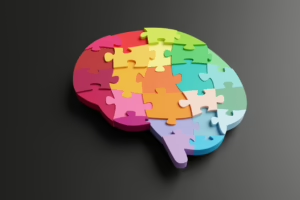
Artificial intelligence (AI) is rapidly transforming the business world, and HR departments are no exception, in fact they likely have one of the most critical leadership roles at the table when considering the impacts of literacy and change management.
While the potential of AI to revolutionise HR is undeniable, for the time being many organisations are struggling to implement it effectively. Why? Because successful AI integration requires more than just adopting new technology; it demands a fundamental shift in mindset, a commitment to building AI literacy, and a clear vision for how AI can empower the workforce.
This is particularly critical given that 70% of UK employees are already using AI in their roles, but 34% admit they still lack essential soft skills required to maximise AI’s potential. These skills include communication, problem-solving, and critical thinking, which are crucial for integrating AI into daily workflows.
This article explores five core pillars that organisations can leverage to move beyond AI as a buzzword, and unlock its true transformative power in HR.
1. Assemble a cross-functional task force
AI implementation thrives on collaboration, making it essential to assemble a cross-functional task force. This team, comprised of HR, CIO, and legal representatives, brings diverse perspectives to the table, allowing businesses to evaluate AI opportunities holistically. The task force plays a critical role in assessing not only the feasibility and impact of AI initiatives but also their alignment with strategic goals and ethical standards.
By diligently addressing the question of “should we?” versus “can we?”, the team ensures that AI projects are both technically viable and ethically sound.
2. Define your company’s vision and principles for AI
A clear vision and a well-defined set of principles are essential for successful AI integration as they provide the backdrop for how you will make decisions related to AI. Organisations must articulate what they aim to achieve with AI, establishing guiding principles that – among other things – ensure both ethical and trustworthy use. Just as the UK is establishing a clearer framework for AI adoption with its recent international treaty signing, businesses must also define their own path forward. Amidst the hype, it’s tempting for leaders to over-promise on AI’s potential for productivity and efficiency without an approach for achieving those results. A strong vision, however, provides crucial direction, and starts with understanding what the business truly wants to achieve with AI and identifying where it can deliver the most value to the organisation.
AI in HR should prioritise strengthening human-in-the-loop decisions. This isn’t simply about automating existing tasks, but redefining business processes around AI capabilities. That strategic shift is the difference between incremental improvements (like 5% productivity gains) and transformative change (60% and greater). For example, are you aiming to enhance efficiency, boost employee retention, or re-define the employee experience? Understanding how AI can specifically contribute to your overarching goals is vital. Only then is a business truly ready to begin its AI journey.
3. Build foundational AI knowledge
Given current AI literacy is estimated at approximately 24%, the journey to AI-driven transformation begins with the HR team building a foundation of AI knowledge for themselves. This can start simply through self-education.
Critically, this foundation in partnership with the CIO/IT must also encompass robust data management practices, recognising that even the most sophisticated AI relies on secure, accurate, unbiased, and transparent data to be successful. Key components of this foundational knowledge include understanding data bias and its effects, related ethical considerations, and the importance of transparency and data security.
4. Empower employee AI literacy through training
Empowering employees with AI literacy is crucial for successful and safe AI adoption. Simply implementing AI tools in HR won’t unlock the promised value without a full understanding of how to use these tools effectively. And the rise of readily available Generative AI tools like ChatGPT has spurred employee experimentation outside official channels. While encouraging, this “Bring Your Own AI” (BYOAI) approach presents risks if left unchecked – such as sensitive data flowing out of the organisation, for example. As such, organisations must invest in robust training programmes and accessible AI guidelines, independent of any internal AI development strategy.
The next step is empowering an organisation using effective guardrails as they develop a clearer understanding of both AI’s capabilities and its limitations. This can be accomplished by developing a “sandbox” environment that allows for experimentation supplemented with micro-training on AI, prompt engineering, data privacy and related topics. This approach equips everyone with the skills to engage with AI responsibly and effectively.
This comprehensive approach ensures responsible and effective AI usage, maximising benefits while mitigating risks.
5. Cultivate an ideas pipeline in collaboration with employees
True innovation thrives in collaborative environments. At the same time emerging capabilities make AI look like a giant hammer, and everything else like a nail. The goal is two-fold, create a process for evaluating ideas for those that are closest to the business process, while recognising that many ideas don’t require the use of AI to deliver business benefits. By actively involving employees in the AI journey, organisations can cultivate a rich pipeline of ideas that drive meaningful transformation while focusing the time. Encouraging feedback and co-creation ensures that AI solutions are tailored to the unique needs of the workforce, ultimately enhancing both satisfaction and engagement, and having an open dialogue between leadership and employees fosters a sense of ownership and inclusion, crucial for successful adoption.
Regular brainstorming sessions and innovation workshops can also provide valuable platforms for employees to share their insights and propose AI-driven solutions. By tapping into this collective intelligence, organisations can uncover novel applications of AI that might otherwise remain hidden.
The future of work is being shaped by AI, and those who adapt swiftly and thoughtfully will lead the charge. By integrating AI in a thoughtful way, organisations can transform HR from being perceived as a support function into a driver of innovation and growth. Embracing AI as a catalyst for HR transformation requires a holistic approach, deliberate planning, and a commitment to keeping humans at the heart of technology. Only then can organisations truly realise the transformative potential of AI and achieve sustainable success in the modern, AI-enabled workplace.



